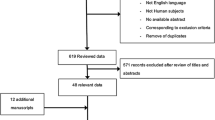Abstract
Objective
The objective of this study was to derive normal electrocardiographic values and to report the abnormal findings in a large contemporary European cohort of physically active children and young adolescents.
Methods
In a 3-month period, data derived from subjects aged between 3 and 14 years and referred to the Telecardiology Centre (Genoa, Italy) for electrocardiogram (ECG) evaluation as pre-participation screening for non-competitive sports were analyzed.
Results
A total of 2060 ECGs were recorded. Of those, 1962 did not show any morphological abnormality and were used to derive normality ranges for heart rate, PR interval, QRS duration, corrected QT interval, and voltage of R wave as measured in V1 according to age and sex. Findings and clinical implications of the 98 ECGs with abnormal findings were also reported. Abnormal ECG findings were not as uncommon as expected in this population, being manifest in about 5 % of subjects. However, major ECG anomalies (diffuse negative T-waves, pre-excitation) were present in just ten subjects (0.5 %). Lower mean heart rate values (from 90–100 bpm at 3 years of age to 80–85 bpm at 14 years of age) and lower rates of the prevalence of negative T-waves in the V3 lead (from 55–60 % at 3 years of age to 8–10 % at 14 years of age) were observed with increasing age.
Conclusions
This is the first work reporting derived normal limits and abnormal ECG findings in a large contemporary European cohort of children and adolescents aged 3–14 years practicing non-competitive sports. Clear pathological alterations are extremely uncommon, deserving, when encountered, additional examinations. Even in a physically active population, the common features of an adult athlete’s ECG are absent.






Similar content being viewed by others
References
Davignon A, Rautaharju P, Boiselle E, Soumis F, Megelas M, Choquette A. Normal ECG standards for infants and children. Pediatric Cardiology. 1979;1:123–131.
Rijnbeek PR, Witsenburg M, Schrama E, et al. New normal limits for the paediatric electrocardiogram. Eur Heart J. 2001;22:702–11.
World Medical Association. Declaration of Helsinki: ethical principles for medical research involving human subjects. JAMA. 2013;310:2191–4.
Molinari G, Reboa G, Frascio M, et al. The role of telecardiology in supporting the decision making process of general practitioners during the management of patients with suspect cardiac event. J Telemed Telecare. 2002;8:97–101.
Molinari G, Valbusa A, Terrizzano M, et al. Nine years’ experience of telecardiology in primary care. J Telemed Telecare. 2004;10:249–53.
Hancock EW, Deal BJ, Mirvis DM, et al. AHA/ACCF/HRS recommendations for the standardization and interpretation of the electrocardiogram: part V: electrocardiogram changes associated with cardiac chamber hypertrophy: a scientific statement from the AHA Electrocardiography and Arrhythmias Committee, Council on Clinical Cardiology; the ACC Foundation; and the HRS. Endorsed by the International Society for Computerized Electrocardiology. J Am Coll Cardiol. 2009;53:992–1002.
Rautaharju PM, Surawicz B, Gettes LS, et al. AHA/ACCF/HRS recommendations for the standardization and interpretation of the electrocardiogram: part IV: the ST segment, T and U waves, and the QT interval: a scientific statement from the AHA Electrocardiography and Arrhythmias Committee, Council on Clinical Cardiology; the ACC Foundation; and the HRS. Endorsed by the International Society for Computerized Electrocardiology. J Am Coll Cardiol. 2009;53:982–91.
Surawicz B, Childers R, Deal BJ, et al. AHA/ACCF/HRS recommendations for the standardization and interpretation of the electrocardiogram: part III: intraventricular conduction disturbances: a scientific statement from the AHA Electrocardiography and Arrhythmias Committee, Council on Clinical Cardiology; the ACC Foundation; and the HRS. Endorsed by the International Society for Computerized Electrocardiology. J Am Coll Cardiol. 2009;53:976–81.
Biasco L, Cristoforetti Y, Castagno D, et al. Clinical, electrocardiographic, echocardiographic characteristics and long-term follow-up of elite soccer players with J-point elevation. Circ Arrhythm Electrophysiol. 2013;6:1178–84.
Corrado D, Pelliccia A, Heidbuchel H, et al. Section of Sports Cardiology, European Association of Cardiovascular Prevention and Rehabilitation. Recommendations for interpretation of 12-lead electrocardiogram in the athlete. Eur Heart J. 2010;31:243–59.
Faina M, Veicsteinas A, Biffi A. Classificazione degli sport in relazione all’impegno cardiovascolare. Med Sport. 2010;63:9–13.
Corrado D, Pelliccia A, Bjørnstad HH, et al. Study Group of Sport Cardiology of the Working Group of Cardiac Rehabilitation and Exercise Physiology and the Working Group of Myocardial and Pericardial Diseases of the European Society of Cardiology. Cardiovascular pre-participation screening of young competitive athletes for prevention of sudden death: proposal for a common European protocol: consensus statement of the Study Group of Sport Cardiology of the Working Group of Cardiac Rehabilitation and Exercise Physiology and the Working Group of Myocardial and Pericardial Diseases of the European Society of Cardiology. Eur Heart J. 2005;26:516–24.
Maron BJ, Thompson PD, Ackerman MJ, American Heart Association Council on Nutrition, Physical Activity, and Metabolism, et al. Recommendations and considerations related to preparticipation screening for cardiovascular abnormalities in competitive athletes: 2007 update: a scientific statement from the American Heart Association Council on nutrition, physical activity, and metabolism. Circulation. 2007;115:1643–55.
Halkin A, Steinvil A, Rosso R, et al. Preventing sudden death of athletes with electrocardiographic screening: what is the absolute benefit and how much will it cost? J Am Coll Cardiol. 2012;60:2271–6.
Maron BJ, Doerer JJ, Haas TS, et al. Sudden deaths in young competitive athletes: analysis of 1866 deaths in the United States, 1980–2006. Circulation. 2009;119:1085–92.
Marijon E, Tafflet M, Celermajer DS, et al. Sports-related sudden death in the general population. Circulation. 2011;124:672–81.
Author information
Authors and Affiliations
Corresponding author
Ethics declarations
Funding
No financial support was received for the conduct of this study or preparation of this article.
Conflict of interest
Giuseppe Molinari, Natale D. Brunetti, Luigi Biasco, Sandro Squarcia, Yvonne Cristoforetti, Riccardo Bennicelli, Cecilia Del Vecchio, Cecilia Viacava, Carla Giustetto, and Fiorenzo Gaita declare that they have no conflict of interest to disclose.
Electronic supplementary material
Below is the link to the electronic supplementary material.
Rights and permissions
About this article
Cite this article
Molinari, G., Brunetti, N.D., Biasco, L. et al. Electrocardiograms of Children and Adolescents Practicing Non-competitive Sports: Normal Limits and Abnormal Findings in a Large European Cohort Evaluated by Telecardiology. Sports Med 47, 555–563 (2017). https://doi.org/10.1007/s40279-016-0609-7
Published:
Issue Date:
DOI: https://doi.org/10.1007/s40279-016-0609-7




